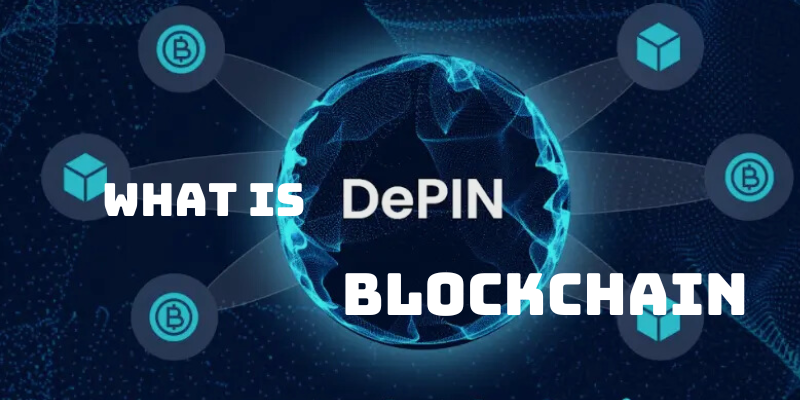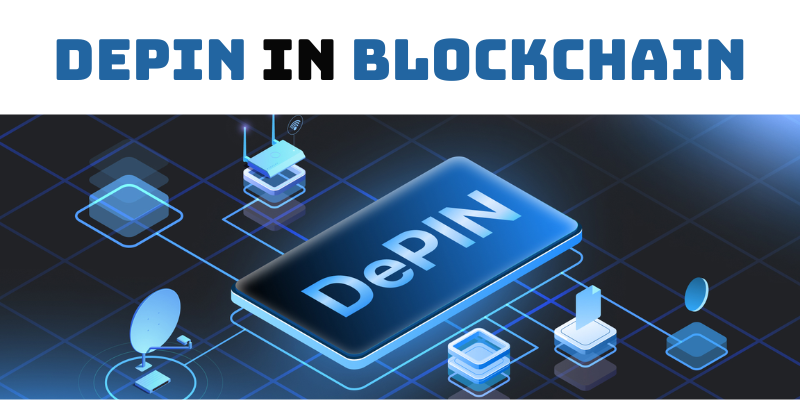What is DePIN in Blockchain? The Future of Infrastructure
What is DePIN in Blockchain? It’s an innovative concept that combines blockchain technology with physical infrastructure, creating decentralized networks. This model enhances security, transparency, and efficiency, transforming how we manage real-world resources and paving the way for a more inclusive and sustainable future.
Contents
What is DePIN in Blockchain?
DePIN, or Decentralized Physical Infrastructure Networks, is an emerging concept that brings together blockchain technology and physical infrastructure to create decentralized systems. These networks aim to shift the control and management of infrastructure from centralized entities to a more distributed and user-governed model.
By leveraging blockchain’s core capabilities, DePIN in Blockchain is poised to redefine how we manage and operate real-world infrastructure, making it more secure, transparent, and efficient. In this article, we explore the potential of DePIN in Blockchain and how it could shape the future of infrastructure.

Key Features of DePIN in Blockchain
Decentralization
DePIN in Blockchain distributes control across multiple participants, avoiding the risks of centralized systems, such as system failures or inefficiencies. Participants contribute resources like storage or energy and are rewarded with tokens, ensuring the network runs smoothly.
Token Incentives
Participants earn tokens by contributing resources, which encourages active participation and ensures the sustainability of the network. The token-based reward system motivates users to keep the infrastructure running and growing.
Transparency and Security
Blockchain records all transactions on a public ledger, ensuring transparency and accountability. With strong encryption and smart contracts automating processes like payments and governance, DePIN in Blockchain enhances security and reduces human error.
How DePIN in Blockchain Works?
So, what is DePIN in Blockchain in practice? The concept relies on tangible, real-world assets contributed by participants to form the physical infrastructure of the network. These could include anything from mobile devices and solar panels to wireless access points and data storage servers. For example, in a decentralized cloud storage network, users can rent out their unused storage space in exchange for tokens. This network is powered by blockchain, which records and secures all transactions.
Additionally, DePIN in Blockchain utilizes off-chain computing solutions, such as oracles, to bring real-world data into the blockchain ecosystem. Oracles help bridge the gap between physical infrastructure and the blockchain, enabling the system to react to real-world events, like changes in energy consumption or internet bandwidth usage. This connection between physical infrastructure and blockchain data ensures the network operates efficiently and responds dynamically to changes.
Diverse Applications of DePIN in Blockchain
What is DePIN in Blockchain beyond cloud storage? The potential applications of decentralized physical infrastructure are vast. For instance, in the energy sector, DePIN in Blockchain could enable peer-to-peer energy trading. Individuals who generate excess energy from solar panels could contribute it to a decentralized grid and earn tokens in return. This system would not only increase the use of renewable energy but also ensure that energy distribution is decentralized and more resilient.
In telecommunications, DePIN in Blockchain could create a decentralized internet infrastructure where participants share bandwidth and earn tokens for providing internet access. This model reduces reliance on traditional internet service providers and could provide internet access to underserved or rural areas, promoting greater inclusivity.

Challenges and Opportunities
While DePIN in Blockchain presents significant advantages, there are challenges to consider. One of the main challenges is the maintenance and operation of physical infrastructure by decentralized participants. Coordinating and ensuring the proper functioning of this infrastructure, particularly at scale, may require complex governance mechanisms. However, blockchain technology and smart contracts offer solutions for automating many of these processes, reducing the reliance on manual intervention.
Scalability also poses a challenge for DePIN in Blockchain. As the network grows, the blockchain infrastructure must be able to handle an increasing volume of transactions and data. However, with innovations like Layer 2 solutions and more efficient consensus mechanisms, these challenges can be addressed, allowing DePIN in Blockchain to scale effectively.
Follow New Eagle Eye to stay updated on the latest innovations in DePIN in Blockchain and other cutting-edge blockchain technologies!